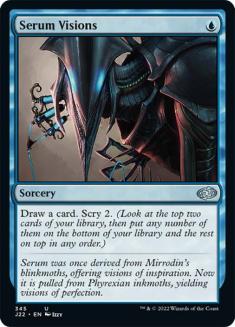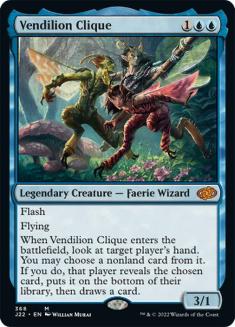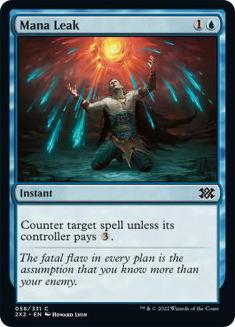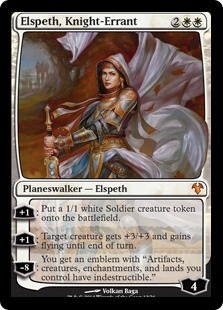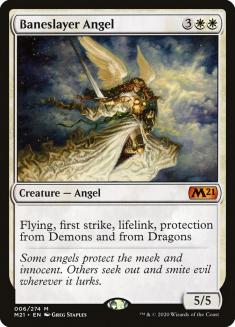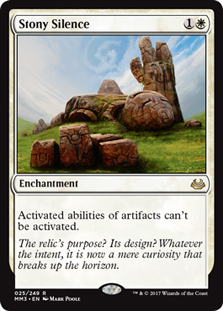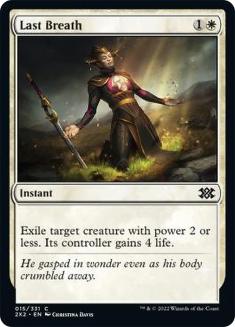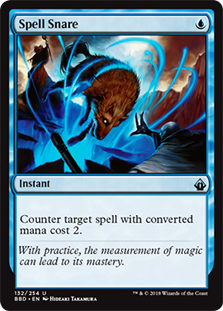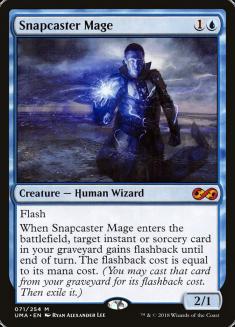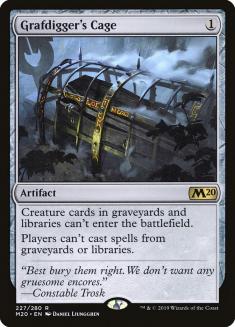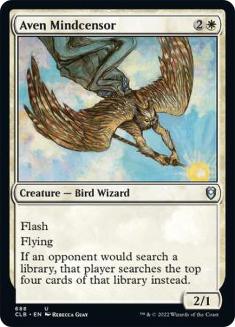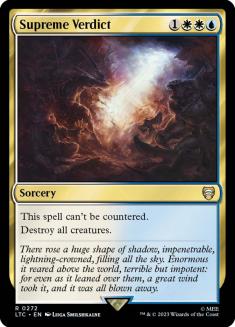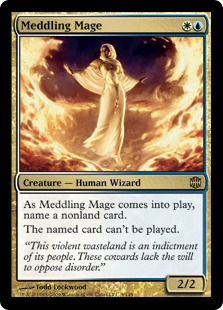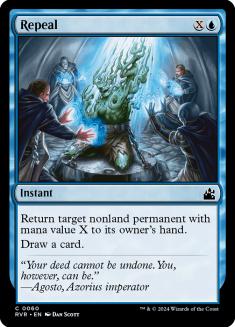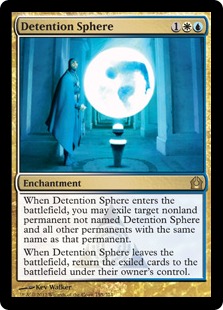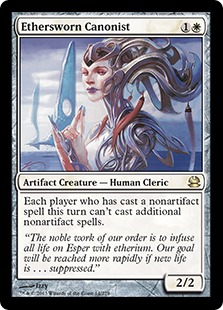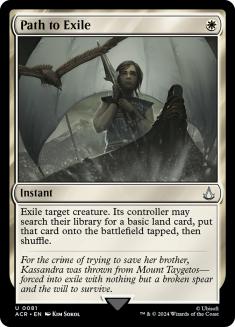Modern season is coming up, and a breakdown of the format and U/W Control is here by popular demand. I had great success at Grand Prix Richmond with U/W Control and have heard some great reports from other players that dared to take Gideon Jura along for their Modern ride. The deck is powerful, consistent and aggro decks’ worst nightmare. When you sleeve up a deck that I suggest and stamp with the control player’s seal of approval, you can expect powerful spells in a 75 that has a hard time losing to decks with lots of creatures in them. This U/W Control deck is no different.
However, I do have one confession to make about my Modern experiences and the deck itself.
When I crafted one of the endangered species of the Modern format (control) and added all of my favorite cards from Standard’s past, I have to admit that no real testing took place prior to GP Richmond. I love streaming, traveling from area to area meeting people during the tournament grind and being part of this Magic community, but my time has been drastically limited by work and school.
Luckily summer is quickly approaching, and I guarantee the streaming of control will take place when I’m unemployed for two months. With so little free time, I was barely able to play a game or two with U/W Control before the thousands of people rushed to Richmond to show off their Modern prowess, so I knew it would be an uphill battle. One of the only errors I made during the tournament was my misuse of Meddling Mage, which I’ll be sure to discuss before the end of this article. Other than that I played pretty well and had very fortunate matchups that propelled me to a near Top 8 finish in a format that was foreign to me.
Creatures (5)
Planeswalkers (4)
Lands (24)
Spells (27)

The Diversity of Modern
Modern is a format that consists of many older cards, which historically has created the opportunity for an unbalanced and broken format. WotC has had to continuously ban cards in order to maintain a healthy format for players to sleeve up their old Mirrodin cards and do battle. I think that this has been a great success, though the format has seen some rough times in its brief history.
Blazing Shoal on an Inkmoth Nexus on turn 2 resulted in the deaths of many mages. Cloudpost produced an absurd amount of mana, allowing players to do broken things, and cantripping artifacts created an absurd combo deck that destroyed people regularly. After Deathrite Shaman was banned, the format seemed to calm down, with many different types of decks being viable. Even though the format is healthier, there are still some decks that are played more than others.
Affinity
Affinity will always exist as long as cheap artifacts and a lack of devastating hate exist. The funny aspect of Modern to note is that there is a ton of hate cards that are very good against Affinity in different colors. I ran Stony Silence in my sideboard, which completely destroys Affinity in a spectacular way. I didn’t realize when I sleeved up the sideboard powerhouse that it shut down Darksteel Citadel and Mox Opal. The card is powerful enough to stop Cranial Plating, Arcbound Ravager, Steel Overseer, and any other activated gem the robots decide to run.
Control mages are lucky that this deck doesn’t run any cards with actual affinity (besides Thoughtcast), which provides us with the ability to use spot removal on their creatures at a casual pace, cast Supreme Verdict if things get slightly out of hand, play a Baneslayer Angel or Gideon Jura to completely stop an assault, cast Spell Snare any threat on the draw, and just have our way with the robots.
I was paired against Affinity seven times during the Grand Prix and only lost three games total. You all should join me in hoping that Affinity stays at the top and continues to put up good numbers at events because if the artifact menace of old provides players hope of victory, then we can come with our spells from the control camp and clean house easily.
Out (on the play):
Out (on the draw):
In:
Sideboarding for this matchup is pretty simple. Baneslayer Angel and Stony Silence are haymakers that Affinity just can’t deal with, and the single copy of Last Breath is another removal spell to add to the avalanche of removal that we’re already packing. When boarding cards out, there is some debate on how good Mana Leak is. I think Mana Leak is horrendous on the draw, which is why I board out all but one. Spell Snare is phenomenal both on the play and the draw, and the Mana Leak left in acts as the fifth early counterspell.
Vendilion Clique is a bit too slow, which is the reason why I shave one off here and there, but Elspeth, Knight-Errant is a card that can only do so much in the matchup. It is a solid win condition, but bringing in the queen of Angels replaces that requirement for victory in the late game.
Melira Pod
This deck is the boogeyman of the format and the victor of GP Richmond. Melira Pod was around well before that tournament and has continued to see play after, posting successful numbers on Magic Online and in live play. The power of this deck is rooted in its ability to win with a bunch of dorks on the ground via Gavony Township or destroy an opponent with the combo portion of their deck. The combo creatures have persist, which is a natural problem for the control decks that enjoy killing creatures with mass removal spells.
This matchup isn’t too bad for U/W Control, and if it’s played properly, I’d even call it a decent matchup. The key strategies to winning against Melira Pod are getting the most bang for your buck with Supreme Verdict, saving Detention Sphere for resolved Birthing Pod, using your life total as a resource, and casting Path to Exile to defend against creatures that come back from the graveyard. Game 1 is won or lost by following these strategies and playing to the best of your ability. One mistake can lead to an immediate loss of the game and possibly the match because of the power level of their critters.
Out (on the play):
Out (on the draw):
In:
Sideboarding against Melira Pod is a little bit trickier than Affinity. I was paired against Melira Pod twice at Grand Prix Richmond and defeated it both times with the help of cards that are still legal in Standard. I think at this point it’s time to remove one Supreme Verdict for a Wrath of God to help against Thrun, the Last Troll. At the time of the Grand Prix, I had no idea that the Troll was being played, so I sided with the mass removal spell that can’t be stopped.
The worst card against Melira Pod in the maindeck is Snapcaster Mage. Snapcaster Mage has to be cut due to bringing in Grafdigger’s Cage and Rest in Peace. Rest in Peace isn’t the greatest card against Melira, but it does stop the combo, prevents persist, and stops the most annoying card of all time: Reveillark. That card is a blowout against control and always has been. It does much more than persist because upon its death it undoes a prior Supreme Verdict, and preventing that is important.
Other cards that are powerful in the matchup are Aven Mindcensor and Baneslayer Angel. The reason why these dorks are powerful against us because the removal that Melira Pod packs is slim and often not included for games 2 and 3. Use Baneslayer Angel in an attempt to catch them off guard and after a mass removal spell.
Twin
Twin is a deck that can come in two different varieties. RUG Twin is a much easier matchup than straight U/R due to their creature count. RUG Twin is a midrange deck that packs a powerful combo, similar to Melira Pod. The big difference between the two matchups is the effectiveness of Supreme Verdict. Mass removal against Twin is suspect at best. Even if you use it to kill two copies of Tarmogoyf, there’s a chance that they flash in a piece of the combo and kill you on the spot.
The best news for U/W Control players against RUG Twin is how live all of the spells in the maindeck are. There are no "dead" cards, and if you want to see how it plays out, check out this video feature of me against Chris Yarborough at GP Richmond. In the match, I played draw go for the majority of game 1 and eventually won on the back of powerful spells. In the second game, I resolved Gideon Jura against a Sword of Feast and Famine on Chris’ side of the board, which blanked nearly his entire aggressive strategy and eventually won me the game. I played against Valentin Mackl for my other RUG Twin experience in Richmond and won 2-0 on the back of Meddling Mage in game 2.
The U/R Twin deck is much more of a nightmare than its green counterpart. Instead of all of those creatures, they pack more combo pieces, card draw, and protection. U/W Control only has countermagic and Path to Exile in game 1 to stop it, but after board there are a few more options.
RUG Twin Out:
RUG Twin In:
U/R Twin Out:
U/R Twin In:
Our sideboard is not the strongest against Twin decks. I honestly believe in being aggressive in this matchup, which gives us a fighting chance against the resilient combo deck. Using Ethersworn Canonist in this matchup is much better than it appears, preventing the opponent from ever comboing off successfully if played right. You allow them to resolve their Pestermite at end of turn; when they untap, you can respond to Splinter Twin with a Path to Exile that can’t be stopped.
Ethersworn Canonist and Meddling Mage complete the tag team of hate bears, and chances are your opponent won’t be packing all their burn after the first game. They have access to Pyroclasm effects, but they won’t bring them in against you because U/W Control is not a deck at the top tier of knowledge or play. The best part about playing decks that I develop is your opponents might not be well versed in the school of Shaheen sorceries, which gives you a distinct advantage throughout a tournament.
Storm
Storm is the combo deck that we want to get paired against more than anything else. Game 1 is a coin flip, with victory based on the use of Detention Sphere, Spell Snare, Repeal, and the other counterspells. If you prevent them from getting a Pyromancer Ascension online, then your chance of winning is very high. Creatures that lower their average spell cost are dispatched by removal that is otherwise dead, and the spells they have are ineffective without the help of their supplemental permanents. Our win conditions are very slow against Storm, and my best suggestion is to deal with one of their enablers early and then slam a win condition. Waiting around isn’t the best idea against a deck that can win with an overloaded amount of cards and a storm finish.
My favorite trick against this deck is to Shock yourself on turn 1 if you have a Hallowed Fountain. If they are holding one Pyromancer Ascension, they will probably not cast it due to the bluff of Spell Snare, and if they have a decision between the powerful enchantment or Goblin Electromancer, then they will most likely drop the creature first. This trick is pretty fun, and the two damage isn’t going to make or break you in the grand scheme of things.
Out:
In:
This matchup gets even better after sideboarding. Ethersworn Canonist, Meddling Mage, Rest in Peace, and Grafdigger’s Cage prevent combos from the hand and the graveyard. It is really hard for a Storm player to win without the use of Flashback, and that is the main reason for bringing in graveyard hate. I don’t bring in all three because of my use of Snapcaster Mage though. If you feel the need to bring in more graveyard hate, I wouldn’t fault you for it. I bring in one Baneslayer Angel as well because she is a better win condition overall than Elspeth, Knight-Errant in this matchup.
Decks On The Decline
U/B Faeries, Scapeshift, U/W/R, Burn, G/W Auras, and B/G Midrange are on the decline in popularity from my experience. Magic Online still has a decent amount of G/W Auras and really aggressive decks, but that is due to the cheap cost of building them digitally. If you are preparing for a Pro Tour Qualifier after this Limited season is done or any other decent-sized tournament, I would add the biggest players to your gauntlet for testing.
U/W Control is powerful against G/W Auras because we pack multiple board sweepers. This also helps against the B/G Midrange decks out there and anyone else who dares to play creatures in the early turns without a combo kill. U/W/R and U/B Faeries are the toughest decks for U/W Control in this bunch, and that is just hard to repair. U/W/R is only challenging if people are playing the control version over midrange because of Sphinx’s Revelation and Ajani Vengeant. The midrange deck is a joke; Supreme Verdict and simply blocking Geist of Saint Traft are easy answers and only needed if they somehow resolve it early on.
I played against U/W/R twice in Richmond and put up a 1-1 record, which leads me to the misplay story. I mentioned how I hadn’t played any Modern prior to this tournament (since Worlds in San Francisco), and it finally caught up with me.
I was playing against a nice gentleman wielding U/W/R, and I had no idea that there were different versions. I didn’t see Geist of Saint Traft game 1 and only saw Restoration Angel and Celestial Colonnade as he beat me down easily. For game 2, I brought in Meddling Mage to prevent him from taking over with a large Sphinx’s Revelation, which I also didn’t see in the first game. I was chatting with him casually and mentioned that he didn’t see any of his big spells, and he responded with frustration and angst about how much he hoped to draw them in game 2.
I was played for a sucker and bit the bait easily.
I confidently slammed a Meddling Mage early to stop Ajani Vengeant and then another one later on to stop Sphinx’s Revelation. These cards apparently were not in his 75, but my Grizzly Bears plan worked since I slayed him easily. I saw a Geist of Saint Traft the second game, but I assumed it was a sideboard plan for the control mirror. Game 3 I again dropped an early Meddling Mage naming Ajani Vengeant and then another three turns later on Sphinx’s Revelation. Every time I played one and named a card, he responded with an Oscar-winning performance, and I felt like I was on top of the world.
What put the icing on the cake was my third Meddling Mage that named Lightning Helix, of which all but one was boarded out and sitting in his graveyard. For my math readers out there, that means five Meddling Mages, zero correct choices, and an eventual loss. The best part about all of this was he was dead on board due to my Grizzly Bears army and had one turn to rip a Snapcaster Mage or Cryptic Command; he did, and I was slain. After the match my buddy Chris Pikula and I discussed my wonderful play, and if you want to see the conversation on social media, check out some of my old Twitter feed from the tournament. What a disaster!
Getting back to the metagame discussion, I could write a full article on why U/B Faeries beats the crap out of control, but I’ll save that for another day. If you have been playing Magic for a while and played with Fae in Standard, then you know why control went almost extinct for a year. Let’s all just be thankful that the Fae are weak in Modern and we can just toss it in the "other" section. I hope this article has helped you all fully understand the power of U/W Control in Modern and how it fairs against the big dogs.
The power of Elspeth, Knight-Errant and Gideon Jura are real, and most of the decks you’ll face can’t handle one if it resolves. These cards were unbelievable in Standard and then forgotten in Modern, which makes it our duty to revitalize them and show the world why they are so powerful. I replaced the two copies of Jace Beleren in the maindeck with an additional Repeal and a fourth Serum Visions because Jace Beleren is garbage. I love the second Repeal, but the Serum Visions I’m not too crazy about. So if you think of something saucier that fits the deck, feel free to toss it in.
I think that this U/W Control deck should be the choice of anyone that shares a similar mindset to me. In Grand Prix Richmond there was no other control deck in the X-2 bracket, and this list is the definition of good old-fashioned tapout. Being the only control player in the room is such great advantage, and this deck (like my others) can be easily fine tuned to fit your personal preferences.
The full Journey into Nyx spoiler is out, and even though there aren’t any cards that fit in our Modern deck, expect a nice Standard list next time testing out Disciple of Deceit and other gems that may be overlooked by the average Spike.

